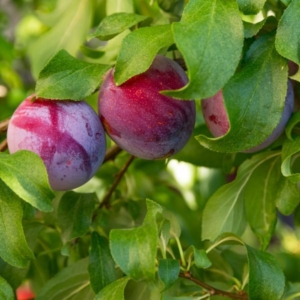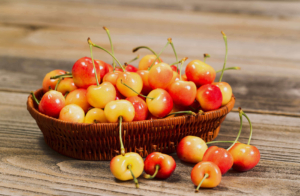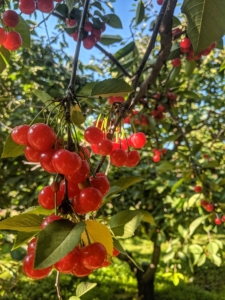Fruiting Plums for Whidbey Island 2023
*All of these plum trees are grown on semi-dwarf rootstock in order to accommodate most home orchards.*
European Plums:
Green Gage
This is a historic plum variety dating back to France in the 1600s. In France, this plum is called “Reine Claude”. The small rounded yellow-green fruits are not pretty, but many say they have the best flavor of any plum. Juicy and firm, with a sweet, melt in your mouth flavor. Excellent fresh, or for baking, preserves and canning. Self-fertile but may produce better with a different European plum nearby. Ripens in late August.
Imperial Epineuse
Considered one of the most delicious plums you can grow, this plum has grown famous for its sweet, flavorful fruit. This French variety has a reddish-purple skin and yellow flesh. The large fruit is excellent for either fresh eating or drying. Once mature, the tree is a heavy producer, often yielding over 50lbs of fruit in a season. Considered self-fertile, but will produce better with a pollinizer. A WSU Mt. Vernon recommended variety.
Italian Prune
Perhaps the most widely planted and beloved fruit tree in history. Deep purple oblong freestone fruits with tasty yellow flesh. Great fresh off the tree, or for drying, canning and cooking. Flesh turns a nice red color when cooked. Ripens in August. Self-fertile but better with another European plum nearby. Can take a few years to start producing. A WSU Mt Vernon recommended variety.
Yellow Egg
Also known as ‘Pershore’, this a large egg-shaped European plum. A heavy yielder. Its skin is bright yellow in color and its flesh is soft and sweet. This heavy producer is mostly used for baking or making jams and jellies but can be eaten fresh if properly ripened. It blooms in late March and ripens in August.
Japanese Plums:
Beauty
A Santa Rosa type plum well suited to Western Washington. Red and yellow skin with amber-red flesh. Sweet and juicy with a delicious flavor that melts in your mouth. Some say the most flavorful Japanese plum. Excellent for fresh eating. Vigorous and productive. Ripens in early August. Said to be self-fertile but would produce heavier with Methley plums nearby. A WSU Mt. Vernon recommended variety.
Methley

A hybrid plum generally listed with Japanese varieties. Beautiful purplish-red plums have amber red flesh and are sweet and juicy. A heavy producer and vigorous grower. Early blooming white flowers are sweetly fragrant. Ripens in July. Best eaten fresh or makes a good jelly. Commonly found in stores and farmers markets during plum season. Well suited to Whidbey Island gardens. Great pollinator for Beauty plums. Said to be self-fertile but would produce heavier with a Shiro or Beauty around. A WSU Mt. Vernon recommended variety.
Shiro
These plums are quite popular with American gardeners and the trees are long lived and very prolific. Its large round yellow fruit is mild, sweet, and wonderfully juicy! With its fast production you’ll have plenty of fruit for eating, cooking, canning, baking desserts. Ripens in early August.
Need to know which trees pollinize which? Check out these Pollination Charts from Biringer Nursery.


